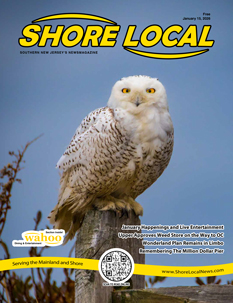Drink Up!
By David Setley
Last week, I recounted our travels to the Touraine Amboise and Vouvray wine regions of the mid-Loire Valley of France. This week, I’ll discuss one of the lesser-known Loire Valley regions – Chinon – before journeying to the far more iconic region of Champagne. Pour yourself a glass of wine and join me.
As I’ve said many times, the French regard terroir as everything. The climate of Chinon is continental with warm, dry summers and cold winters. Soil there is a mix of sand, gravel, and clay, atop a solid bed of limestone. The entire area was underwater nearly 150 million years ago; fossils of marine life formed the limestone, called tuffeau, that exists today. It creates the perfect combination of drainage and water retention that protects the vines from both drought and flood.
We greatly enjoyed Chinon, where the Cabernet Franc grape (father of Cabernet Sauvignon) reigns supreme. We visited the winery and cellar of Domaine Pierre Sourdais. Pierre and his brother ran the original Chateau Sourdais Family Winery until the two brothers began to disagree on operations. Their father chose to split the estate, giving each son half. Pierre had a problem though…his half didn’t have the cellar! Rather than be defeated, he and a friend dug one by hand with a small jackhammer and shovels. It took them 30 years, but he ultimately created a cave that is spectacular to see. In what seemed to be an underground maze, his cave formed his initials (PS). His friend carved small sculptures on the walls; Pierre then had a metal artist create sculptures that depicted key points in his life. Pierre even dug a small room in the cave that he filled with wine from the 2017 vintage in honor of his grandson’s birth. He closed that room with a large iron gate, on which he had crafted an intricate lock. He gives his grandson a hint to the combination each year on his birthday. Talk about artistry!
Though he barely spoke English, Pierre hosted a private wine tasting for Gwen and me, with our guide translating. Pierre’s wines were as outstanding as his story. All were Cabernet Franc, each with a distinct color, flavor, and aroma based on the plot from which the vintage came. One of our favorites, the Reserve Stanislas Chinon 2019, was lighter-bodied with smooth tannins, a nice acidity, and notes of oak. The flavor was a perfect balance of fresh red cherry and earthiness. Another favorite, the Les Boulais Chinon 2011, was darker in color, higher in tannins, and bolder in flavor.
Although we have not yet been able to get Pierre’s wine to New Jersey, I have other recommendations for Chinon wines. Domaine Fabrice Gasnier-Les Graves Chinon is an excellent example of Cabernet Franc from the region. The wine is produced from grapes grown on 40-year-old vines in the village of Graves. I also enjoy the Domaine De La Mariniere Chinon wine. It is a minimal intervention wine that utilizes natural yeast for fermentation and has no added sulfites. It is a dry, medium to medium plus bodied wine with notable acidity and earthiness, aromas of blackberries and oak, and the flavor of red cherries. If you are unfamiliar with Cabernet Franc, I highly recommend trying it. It pairs well with anything you would have with a good Cabernet Sauvignon: duck, lamb, beef, turkey, salmon, tuna, short ribs, roasted meats or dishes with brown gravy or red sauce. Cabernet Franc is a great summertime red and is excellent when slightly chilled.
If there is one French wine region nearly everyone knows, it is Champagne. In typical old-world fashion, Champagne is known by the region’s name, not its grape. To be called “Champagne,” it must be composed of one or a combination of Chardonnay, Pinot Noir or Meunier grapes that are grown in the Champagne region. Additionally, the wine must be produced using the Methode Champenois or Methode Traditionelle, a double fermentation process where the grapes are first turned into wine through fermentation, and then fermented a second time in the bottle. The first fermentation is the same as is done for still wines; it is the second fermentation process that creates the bubbles that Champagne is famous for.
Arguably, the most famous Champagne is Dom Perignon, named after the Benedictine Monk credited with developing many of the processes that made Champagne what it is today. Dom Perignon is rather pricey, but there are many other outstanding, and affordable, Champagnes. Champagne Ployez-Jacquemart Extra Brut Vintage Blanc de Blancs is made exclusively of Chardonnay grapes and is at a great mid-range price point. It is aged for a minimum of 6 years, and is super crisp and refreshing with very persistent bubbles.
We stayed in Reims, the main city in the Champagne region, and enjoyed many variations of Champagne while visiting wineries that varied from small community co-ops to very large multinational producers. As we were leaving Reims, we also visited the Musée de la Reddition (the Surrender Museum) where Nazi Germany surrendered to the Allies at the end of World War II. After visiting Normandy last year, the “map room” in Reims where the surrender was signed was very impactful. Just down the street from the museum is the Champagne House of Charles de Cazanove, a brand I know well. The Charles de Cazanove-Brut Tête de Cuvée, meaning top blend, is a very reasonably priced and wonderful example of a Champagne wine. The blend is 40% Pinot Noir, 40% Meunier, and 20% Chardonnay. Don’t wait for New Year’s Eve to pop open a bottle of Champagne. At this price, create a celebration anytime you can.
I hope you enjoyed learning more about the wines of Loire and Champagne. Next week, I will conclude my vacation recount with wines from Bordeaux. As always, contact me with any questions at dsetley@passionvines.com, or stop into the store. Until next time, Happy Wining!
David Setley is enjoying his retirement from higher education as a wine educator and certified sommelier at Passion Vines in Somers Point, New Jersey.








